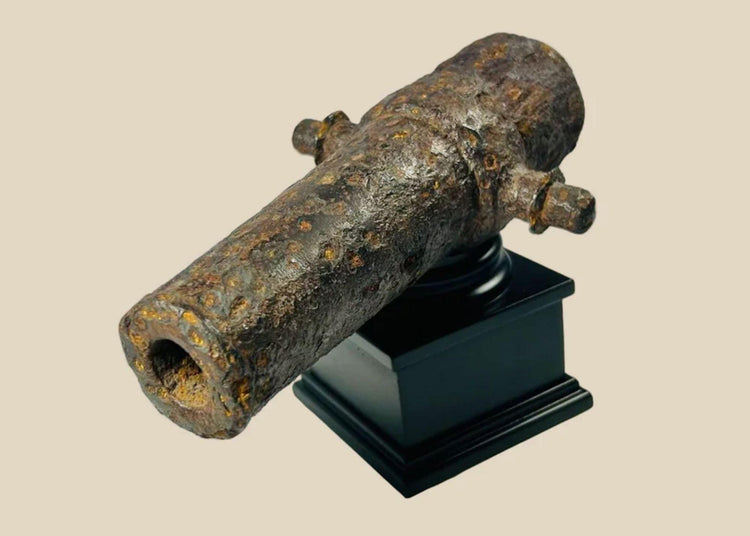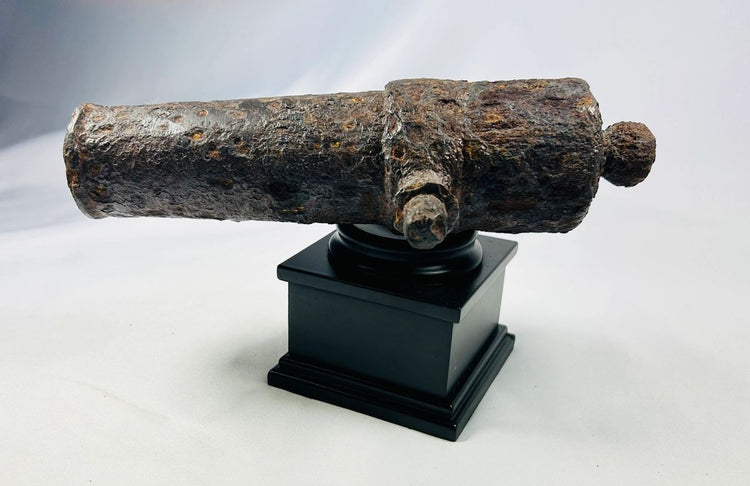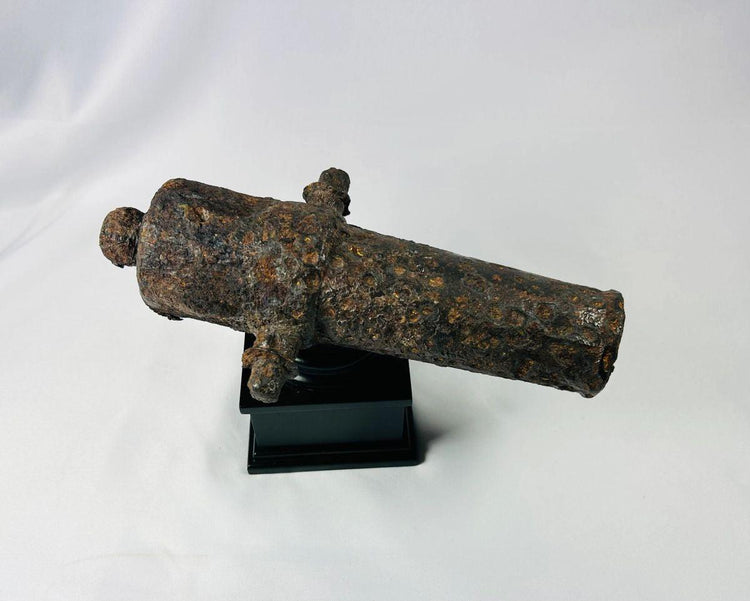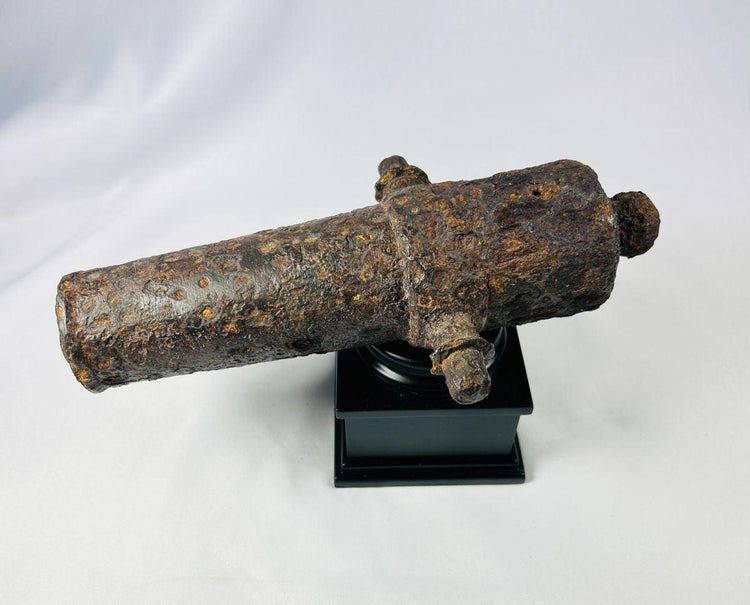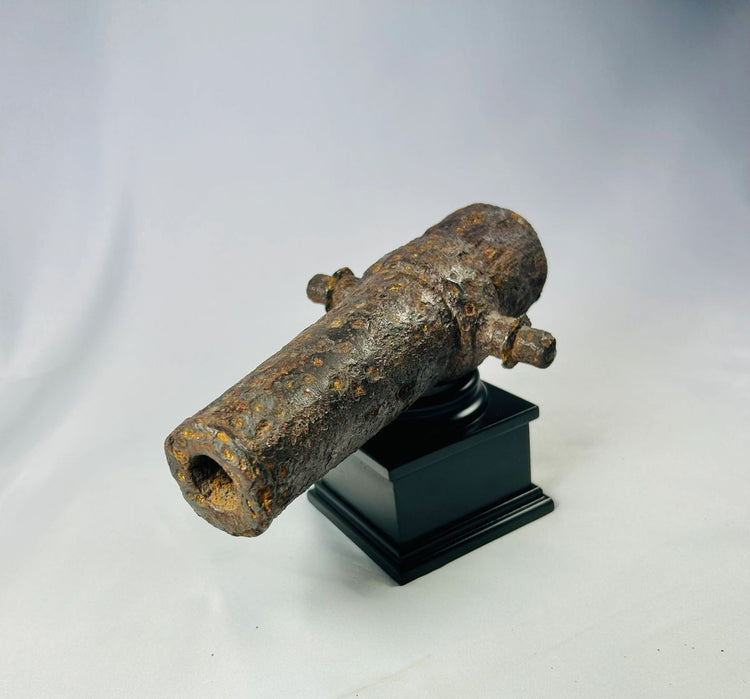Niagara River Salvaged Signal Cannon | Maritime Communication Relic in Excavated Condition | Circa 1700s
Description
More
Less
Historical Context & Origin
Region: North America (Niagara River)
Material: Cast iron or brass (excavated condition)
Period: 18th Century
Description
This historically significant maritime artifact is an 18th-century signal cannon, salvaged from the Niagara River and preserved in excavated condition. Standing 8.3 inches tall, the piece embodies the essential role of small signal cannons in naval and port operations during the 18th century. Unlike standard ordnance, signal cannons were compact, durable, and designed to withstand repeated firings for communication, inspection, and ceremonial purposes.
Features
- Compact form, 8.3 inches in height
- Cast in iron or brass, built for frequent use
- Excavated condition with authentic patina from centuries of submersion
- Provenance: salvaged from the Niagara River
Cultural Significance
Signal cannons were vital tools for maritime communication, announcing a ship’s arrival to harbor authorities, signaling clearance for cargo and crew, and playing a role in disease control during outbreaks by enforcing inspection protocols. They were also used ceremonially to salute, signal in military contexts, and reinforce maritime tradition. Fired using poles tipped with slow-burning wicks rather than fuses, these cannons balanced safety with reliability. This artifact offers a rare glimpse into the intersection of naval technology, commerce, and public health in the 18th century, while also connecting to the broader maritime history of the Great Lakes.
Condition
Excavated condition with natural surface encrustation and wear consistent with long-term submersion. Retains strong form and historical integrity.
Dimensions (approximate)
Height: 8.3 in
Age
18th Century
Learn More
Watch a Video for More Information About Signal Cannons
Explore Our Curated Collection of Ancient Combat Weapons
Description
Historical Context & Origin
Region: North America (Niagara River)
Material: Cast iron or brass (excavated condition)
Period: 18th Century
Description
This historically significant maritime artifact is an 18th-century signal cannon, salvaged from the Niagara River and preserved in excavated condition. Standing 8.3 inches tall, the piece embodies the essential role of small signal cannons in naval and port operations during the 18th century. Unlike standard ordnance, signal cannons were compact, durable, and designed to withstand repeated firings for communication, inspection, and ceremonial purposes.
Features
- Compact form, 8.3 inches in height
- Cast in iron or brass, built for frequent use
- Excavated condition with authentic patina from centuries of submersion
- Provenance: salvaged from the Niagara River
Cultural Significance
Signal cannons were vital tools for maritime communication, announcing a ship’s arrival to harbor authorities, signaling clearance for cargo and crew, and playing a role in disease control during outbreaks by enforcing inspection protocols. They were also used ceremonially to salute, signal in military contexts, and reinforce maritime tradition. Fired using poles tipped with slow-burning wicks rather than fuses, these cannons balanced safety with reliability. This artifact offers a rare glimpse into the intersection of naval technology, commerce, and public health in the 18th century, while also connecting to the broader maritime history of the Great Lakes.
Condition
Excavated condition with natural surface encrustation and wear consistent with long-term submersion. Retains strong form and historical integrity.
Dimensions (approximate)
Height: 8.3 in
Age
18th Century
Learn More
Watch a Video for More Information About Signal Cannons
Explore Our Curated Collection of Ancient Combat Weapons
You May Also Like
















